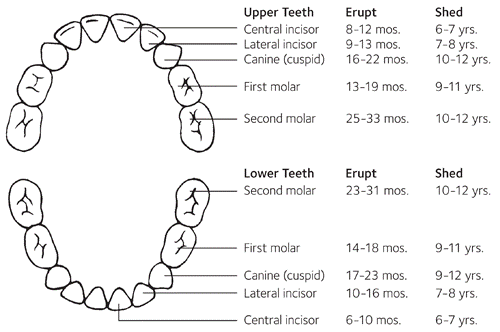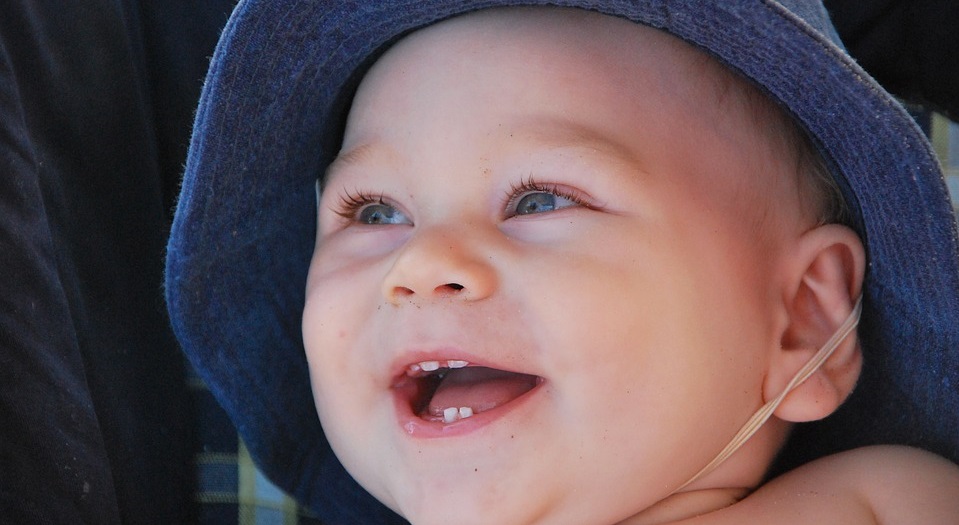Which Baby Teeth Come First?

Baby Teeth Growth Chart from The American Dental Association
When you are a parent to a very young child their health is your top priority – especially if it is your first baby! When those baby teeth start to come in it is only natural for you to worry over which baby teeth come in first… but don’t panic! We have all the information you need to handle those erupting teeth.
The Order Baby Teeth Come In
Which baby teeth come in first is not a sign of how “over” or “under” developed your child is. In fact, generally speaking, they will tend to grow in a certain way. However: if your child’s baby teeth are out of order it is not a cause for concern. If you absolutely cannot put yourself at ease then visit your dental practice for a check up.
We sourced this Baby Teeth Growth Chart to give you an indication of which teeth should occur and when as a rough guide:
So what baby teeth come in first? As you can see from the chart above most children can expect to experience their central teeth erupting before the others. Before your child is three it will have grown 20 of these milk teeth with the molars coming in last. Teething is a painful process, but when the milk teeth do fall out it won’t hurt nearly the same.
The incisors and the canine teeth will tend to develop after you child has moved on to a whole foods diet. Incisors are needed to rip and tear at tougher meats, meaning that they are of lesser importance than the middle teeth; which can be used as an aid to development. Likewise, the molars appearing last is due partially to diet and partially to their size.
Although this is a typical baby teeth growth rate chart it doesn’t tell you what to do if your baby’s teeth come in out of order.
My Child’s Baby Teeth are out of Order – Should I Be Worried?

While dental experts assure us that your baby teeth coming in the wrong order is a fairly rare occurrence – these moms on Essential Baby prove that it does happen. More often than not this is still considered normal and shouldn’t pose any risk at all to your child’s dental future.
When your baby teeth do come in out of order it can sometimes be known as ‘Cross Teething’ (Baby Center). This is a term used to describe exactly this phenomena and hints that the youngster might experience a little more discomfort than usual. However, it doesn’t present any risk to your baby’s oral health.
A typical teething baby may suffer from an upset stomach as well as the discomfort in the oral area that we expect.
“Bad Teething”
There is such a thing as bad teething and if your child is in terrible pain this might explain why. Symptoms of a bad teething include:
• Excessive Drooling
• Sudden lack of interest in solid foods
• Baby is excessively irritable
• Excessive chewing of rubber toys
• Slightly raised temperature
• Upset Stomach
In the case of bad teething your dentist should be able to advize you on how to effectively soothe your infant.
